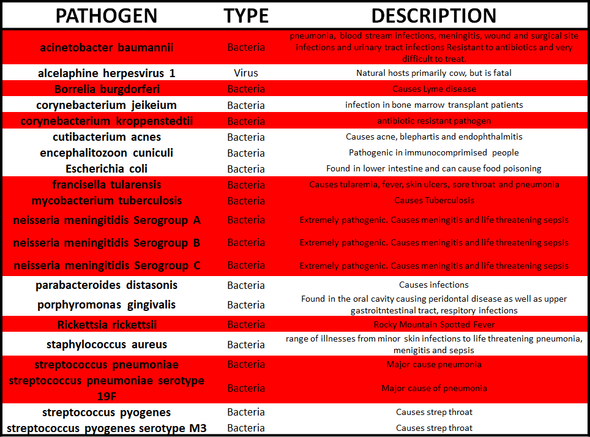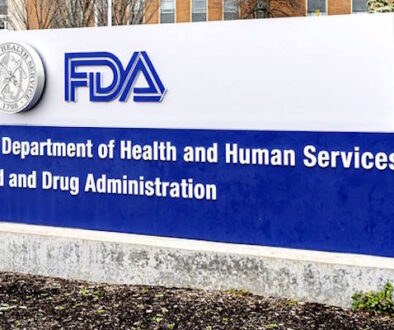A Group Of Florida Parents Cultured Their Kids’ Masks And Found Dangerous Bacteria
The idea of children, including preschoolers, walking around with bacteria traps on their breathing orifices all day so shocked the conscience that last summer, a bunch of internet parodies were produced illustrating such absurdity. Then, within weeks, most local governments mandated this cruel form of child abuse for an entire year without any study of the side effects. Now a group of parents from the Gainesville, Florida, area have shown that such masks are traps for harmful bacteria that potentially make children much sicker than from COVID — the virus for which the masks were required, but failed to mitigate.
In a press release obtained by TheBlaze and posted at RationalGround.com, six Alachua County, Florida, parents reported the findings of the lab cultures of their children’s masks worn in school. The parents sent the six masks to the University of Florida’s Mass Spectrometry Research and Education Center after they were worn for five to eight hours, most during in-person schooling by children ages 6 through 11. Although many students across the country likely wore dirty masks indefinitely for numerous days, the face masks studied in this analysis were new or freshly laundered before wearing. One of the masks submitted was from an adult who wore it at work as a cosmetologist.
The resulting report found that five masks were contaminated with bacteria, parasites, and fungi, including three with dangerous pathogenic and pneumonia-causing bacteria.
The lab used a method called proteomics to extract proteins from the masks and sequence them. The analysis detected the following 11 alarmingly dangerous pathogens on the masks:
- Streptococcus pneumoniae (pneumonia)
- Mycobacterium tuberculosis (tuberculosis)
- Neisseria meningitidis (meningitis, sepsis)
- Acanthamoeba polyphaga (keratitis and granulomatous amebic encephalitis)
- Acinetobacter baumanni (pneumonia, bloodstream infections, meningitis, UTIs — resistant to antibiotics)
- Escherichia coli (food poisoning)
- Borrelia burgdorferi (causes Lyme disease)
- Corynebacterium diphtheriae (diphtheria)
- Legionella pneumophila (Legionnaires’ disease)
- Staphylococcus pyogenes serotype M3 (severe infections — high morbidity rates)
- Staphylococcus aureus (meningitis, sepsis)

“Half of the masks were contaminated with one or more strains of pneumonia-causing bacteria,” according to the release. “One-third were contaminated with one or more strains of meningitis-causing bacteria. One-third were contaminated with dangerous, antibiotic-resistant bacterial pathogens. In addition, less dangerous pathogens were identified, including pathogens that can cause fever, ulcers, acne, yeast infections, strep throat, periodontal disease, Rocky Mountain Spotted Fever, and more.”
For a control, the parents submitted a T-shirt worn by one of the children at school and unworn masks. No pathogens were found on the controls.
Obviously, the naysayers will immediately jump on this and criticize it as being a rudimentary study and small sample size. But that is the entire point. Of course, this issue needs further study. But why has this not been done over the course of the entire year by our government or any well-funded institution? How can we mandate such draconian policies without studying the side effects, including the spread of pathogens? Why is this left to helpless parents trying to raise awareness of these concerns?
It’s not like these concerns are novel. On March 8, 2020, Dr. Fauci told “60 Minutes” that masks can only block large droplets, they give a false sense of security, and they cause people to get more germs on their hands by fiddling with them. Several weeks later, Surgeon General Jerome Adams punctuated this point about the counterproductivity of wearing masks in public. Appearing on “Fox & Friends” on March 31, Adams said that based on a study that shows medical students who wear masks touch their faces 23 times more often, one has to assume that “wearing a mask improperly can actually increase your risk of getting disease.”
A 2014 study of hospital workers wearing surgical masks in a Bangkok hospital found their masks to be saturated with Staphylococcus aureus (found on some of the masks in the Alachua study) and the fungus Aspergillus. Another study of hospital workers in China from 2019 observed that after more than six hours of use, masks worn by medical personnel also contained viruses, including adenovirus, bocavirus, respiratory syncytial virus, and influenza viruses. It doesn’t take a rocket scientist to hypothesize that a warm and humid microclimate cultivated by a mask is going to serve as an incubator for all sorts of pathogens. Not surprisingly, studies have shown that pathogen density on masks grows exponentially after two hours of use.
To this day, Fauci and CDC researchers have never answered how those concerns were no longer valid after their political U-turn on masks, given the terrible conditions with which we’ve witnessed the entire country wearing and reusing masks. The same reason why Fauci said last summer they never planned to embark on a randomized controlled trial of the efficacy of masks is likely why they never studied the side effects of masks either. They didn’t want to discover the truth that they themselves originally understood.
These findings are important for two reasons. First, there is a need to ensure that mask mandates are never implemented again. The Boston Globe is already advocating their use for the flu season. Second, as much as the mask mandate has ended for most consumers, workers in many professions are still required to wear them for hours on end without regard for the hazards they pose.
A Florida appeals court has already ruled that the mask mandate in Alachua County is presumptively unconstitutional because it violates bodily autonomy. The risk of masks cultivating and spreading other pathogens is just another reason why something this personal to the body must remain a personal choice.




